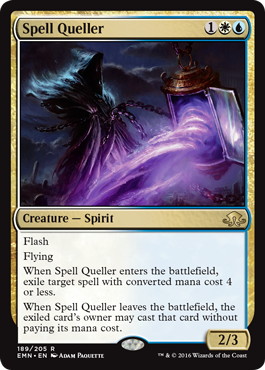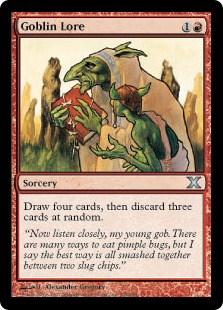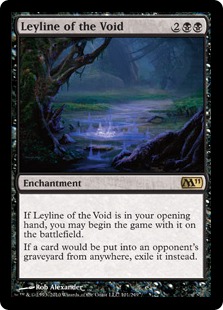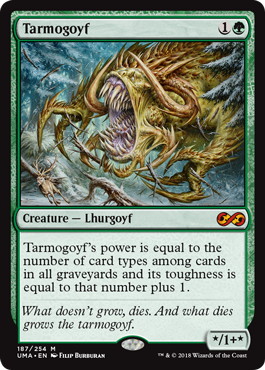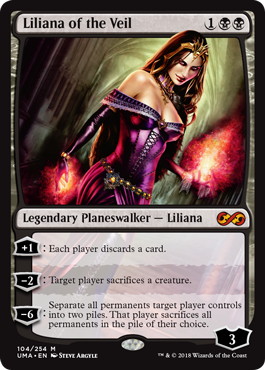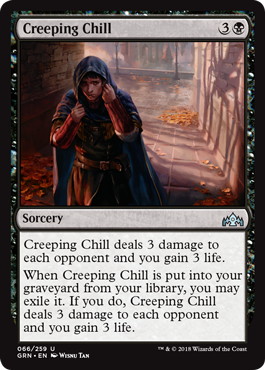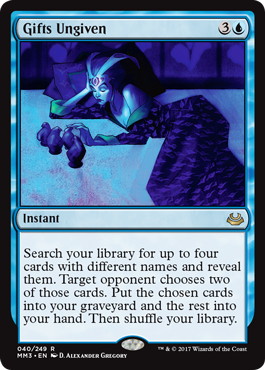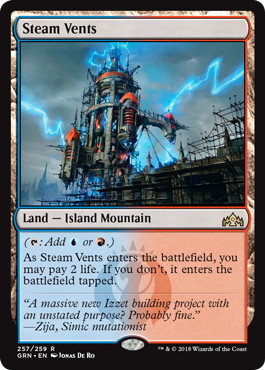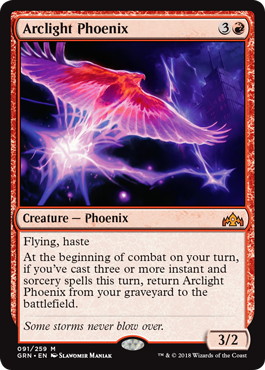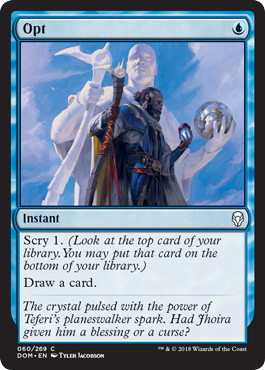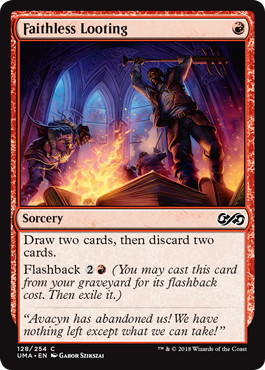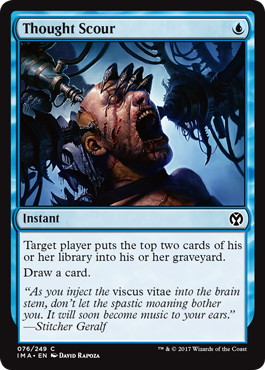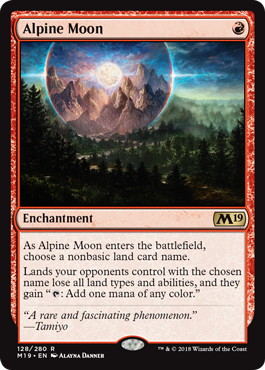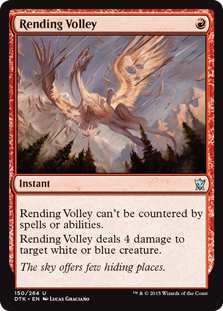Get Ready for the GP Liverpool 2018!
Hola!
During the last weeks, most of my testing has been focused on learning Standard and Guilds of Ravnica Draft. I even played GP Atlanta 2018 with 5C Humans without testing for the tournament! Even though it was a fun event, I really felt a big difference comparing it to tournaments where I actually spent time testing.
Some weeks after, I finally went back to Modern to prepare for GP Liverpool 2018. Since it was a Team Unified Modern GP, I decided to play a bunch of leagues with different decks to have a grasp on how the format adapted to the new 《Krark-Clan Ironworks》 (KCI) menace.
About one/two weeks before the tournament, my teammates Marcio Carvalho and Andrea Mengucci told me they would be playing 《Hardened Scales》 Affinity and Bant Spirits. That left me with plenty of options for that tournament. The Team Unified restriction ruled out decks like KCI or Jeskai Control (because of 《Hallowed Fountain》), so most of my options were proactive decks or BGx strategies.
Hollow One
The deck I liked most during the first days was Hollow One. It’s proactive, resilient and capable of racing even the fastest decks. Between BR and Mono Red, I liked the Mono Red decks a little bit more, but It wasn’t clear to me which one was stronger.
The problem I had with Hollow One is that graveyard hate was slightly too good for my taste, considering I expected A LOT of graveyard hate. Cards like 《Leyline of the Void》 and 《Rest in Peace》 aren’t exactly game over, but they are going to make your life much harder. I also tried a little bit of Dredge, but I just felt playing post-sideboard games with it was like walking into a minefield.
BG Midrange
After that, I decided to change seat and moved into BG Midrange, where the hate cards were excellent combined with discard spells. The problem I ran into with BG was just its power level. I just felt the deck was slightly underpowered. While it’s not exactly bad, I think we live in a format where the classic 《Thoughtseize》/《Tarmogoyf》/《Liliana of the Veil》 sequence isn’t as powerful as it used to be.
In fact, I found it quite the opposite.《Liliana of the Veil》 often ends being too slow; both 《Tarmogoyf》 and 《Dark Confidant》 were quite underwhelming in many matchups… and so goes on. I still feel the shell is very solid, which makes the deck a fine option if we plan to go to a tournament where the bad matchups like Tron aren’t there.
For GP Liverpool, I thought that wouldn’t be the case, but BG was still my backup plan for the tournament. After deciding I would play BG if I didn’t find anything better, I wanted to try proactive linear decks that didn’t care that much about graveyard hate.
Burn
Next stop was Burn. It was also a very short stop since a few 《Creeping Chill》 triggers convinced me to move to the next strategy.
UR Storm
That’s how I landed on UR Storm. I’m not really a Storm player, but having lost to it many times after playing a graveyard hate piece, it made sense to at least give it a try. Following MTGO grinder Elfkid’s advice during a couple leagues, I started to feel comfortable playing the archetype. I even ran into my teammate for the GP Andrea Mengucci while testing for that specific GP!
The biggest problem I had with the deck was that I didn’t think I was good enough at playing it. If you’ve read my previous articles here, on Hareruya, you probably already know I put a lot of weight on my feelings about how I play a deck. Sure, I already knew how to play the deck on a basic level, but playing against good players with decks like UW control was a whole new thing to learn, and I didn’t want to play a GP without having enough experience in those super-complicated spots.
UR Phoenix
My plan was to learn as much Storm as I could the week before the tournament and then decide if I was good enough at it for the GP, knowing that I had BG as a backup plan Then something happened; Ross Merriam, who had been writing about UR Phoenix won the StarCityGames Open Baltimore.
- Ross Merriam
- – Izzet Phoenix
- StarCityGames Open Baltimore
- (1st)
2 《Mountain》
3 《Steam Vents》
4 《Scalding Tarn》
1 《Flooded Strand》
1 《Polluted Delta》
4 《Spirebluff Canal》
-Land (18)- 2 《Monastery Swiftspear》
4 《Thing in the Ice》
4 《Arclight Phoenix》
3 《Crackling Drake》
-Creature (13)-
4 《Serum Visions》
4 《Opt》
4 《Lightning Bolt》
3 《Gut Shot》
2 《Lightning Axe》
2 《Thought Scour》
4 《Manamorphose》
1 《Chart a Course》
1 《Izzet Charm》
-Spell (29)-
2 《Ceremonious Rejection》
2 《Dispel》
2 《Surgical Extraction》
2 《Anger of the Gods》
2 《Alpine Moon》
1 《Spell Pierce》
1 《Ral, Izzet Viceroy》
-Sideboard (15)-
After seeing some of the games, I decided to give it another try playing his 75. A few days later, it became the deck I played at GP Liverpool. I don’t think the deck is exactly easier than Storm, but most of the complicated situations felt natural to me, where in those spots with Storm I was feeling completely clueless.
I didn’t change much of Ross’ list, basically because I figured he did test a lot to get to those numbers and my experience with the archetype was relatively limited.
This is my GP Liverpool decklist
- Javier Dominguez
- – Izzet Phoenix
- GP Liverpool 2018
2 《Mountain》
3 《Steam Vents》
4 《Scalding Tarn》
2 《Polluted Delta》
4 《Spirebluff Canal》
-Land (18)- 2 《Monastery Swiftspear》
4 《Thing in the Ice》
4 《Arclight Phoenix》
3 《Crackling Drake》
-Creature (13)-
4 《Lightning Bolt》
4 《Serum Visions》
4 《Thought Scour》
3 《Gut Shot》
2 《Lightning Axe》
2 《Opt》
4 《Manamorphose》
1 《Chart a Course》
1 《Izzet Charm》
-Spell (29)-
2 《Spell Pierce》
2 《Ceremonious Rejection》
2 《Abrade》
2 《Anger of the Gods》
2 《Leyline of the Void》
1 《Rending Volley》
1 《Alpine Moon》
1 《Ral, Izzet Viceroy》
-Sideboard (15)-
You Should Know These Tips
These are a few things I would like to share about the deck.
《Steam Vents》 Is One of the Hardest Cards to Play in the Deck.
During my testing process I lost games because I fetched for a basic land. I also lost games because I fetched for a 《Steam Vents》. There are a bunch of factors to consider on the fetching decision, since in this deck most things we usually consider on land sequencing do matter. Life Total is extremely relevant in many matchups, and thinning the deck with so many cantrips is also important as well. It is also very costly to miss a colored mana that would make us able to return a few copies of 《Arclight Phoenix》.
The spots where our life count is critical since turn 1 are usually fairly obvious and often involve our opponent playing a 《Goblin Guide》. In those situations we will be mostly fetching basics if we are forced to fetch a land.
Normally, though, our first priority is make sure we are going to be able to cast as many spells as possible during the early game. This usually involves fetching for 《Steam Vents》. That makes our manabase relatively painful, but also makes it so we can draw into a wider range of cantrips and still be able to trigger our 《Arclight Phoenix》.
The problem comes when we need to weight between paying 2 life or leaving ourselves drawing to more outs to trigger 《Thing in the Ice》 or 《Arclight Phoenix》. In those situations, the most important thing is figuring out how likely is an extra turn to impact in the race. If it’s against a deck like 5C Humans where their clock usually snowballs pretty fast, I tend to go for 《Steam Vents》 even if I identify the game is going to be a race.
Often, flipping a 《Thing in the Ice》 equals to a bunch of life points. If we are on a situation where our opponent is pressuring our life total in small chunks, it could be worth to just get a basic, knowing there’s a relevant % of us not being able to cast certain cantrip.
In those life-race matchups, when it comes down to thinning our deck or playing a basic land/《Spirebluff Canal》, I often choose to play the natural land unless I’m desperately looking for something. Even when we go off with a few 《Arclight Phoenix》, paying too much life often forces us to stay on defense, which makes the whole engine a little bit less dangerous for our opponents.
《Arclight Phoenix》 Is an Excellent Blocker
That’s actually a lesson from Standard UR Phoenix, but it translates quite well here as well. It happens a lot against creature decks, and same as in Standard, the goal here is often to buy enough time so a big 《Crackling Drake》 or 《Thing in the Ice》 can finish the job.
The trick is identifying early enough what’s our role in the game. When in doubt, if our hand is strong, I would recommend blocking even if it looks like we will win the race by attacking. The reason for that is that even if they die, our Phoenixes are relatively likely to come back, while our opponent’s creatures are probably going to stay in the graveyard for a while.
With multiple Phoenixes, I also found the correct play was often attacking with just one leaving the rest threatening a double block. The deck is obviously faster at winning if we are attacking, but if we don’t play a 《Thing in the Ice》 on turn2, we often have to change to defense mode against most aggro decks.
You Are not Forced to Cantrip
This is another lesson from the Standard deck where we don’t really 《Opt》 on Turn1 unless we really need to find something. If we are short on cantrips but have enough to put some 《Arclight Phoenix》 into the graveyard, it is sometimes better to use our first turn to fix our mana putting into play a tapped 《Steam Vents》. It doesn’t really happen often, but I found spots like that to happen here and there against aggressive decks.
Holding 《Faithless Looting》 as much as You Can
《Faithless Looting》 is an extremely powerful card. This sorcery is strong enough that it’s probably the most powerful card in the deck. It makes us less likely to flood and screw and the same time while it also digs for the spells we need.
However, discarding 《Arclight Phoenix》 is what makes 《Faithless Looting》 broken in UR Phoenix. That’s why if we have other cantrips, it’s often a good idea to hold 《Faithless Looting》 and play the other cantrips before. This way, we can see more cards so it’s more likely to discard 《Arclight Phoenix》 to the 《Looting》.
This Deck Can Win Grindy Games
I’ve talked about playing on “Defense Mode”, with the idea of playing a longer game. This deck is actually quite good at playing long games because the big creatures (《Thing in the Ice》/《Crackling Drake》) actually demand an answer or they just can run away with the game. Combine that with a low land count and 《Faithless Looting》 and you have a deck that can even sometimes grind control decks. Don’t panic if the game looks like it’s going really long; this deck is prepared to win some of those battles.
《Thought Scour》 does target Players.
This doesn’t have to do much with this deck specifically, but 《Thought Scour》 has been historically used to mess with other people’s 《Serum Visions》. Don’t forget that’s an option!
Sequencing 《Manamorphose》
《Manamorphose》 is a complicated card to play in UR Phoenix, since you have to choose the mana you get before you see the card you are going to draw. That’s inevitably going to lead into some situations where you are just going to chose to wrong color. There’s just not much we can do in those situations. What we can do, though, is choose when to play the 《Manamorphose》. I like to hold 《Manamorphose》 until I have a 《Thing in the Ice》 in play or I think I’m relatively likely to trigger 《Arclight Phoenix》 the same turn I play the 《Manamorphose》.
Keep in mind, though, that losing the game with a 《Manamorphose》 in hand won’t feel good, so against non-interactive decks playing them blind is still an option, since it can still draw into something like a 《Faithless Looting》.
Sideboard Slots Are Very Impactful in a Deck
This deck is full of cantrips. That means we see a lot of cards every game, and we actually see those card quite fast. Thanks to that, by adding one copy of a sideboard card in this deck ,we get a higher % of drawing it that we would get on a deck that only sees one extra card per turn. In a format like Modern where we can have access to high-impact cards, I like to have a sideboard full of cards worth cantripping into.
《Alpine Moon》 is a good example of this. Now, I don’t think 《Alpine Moon》 is very strong, but it’s just very good at what it does. Being cheap, it’s also very good at being drawn with a cantrip, while something like 《Blood Moon》 can be slightly clunky. Being able to cast two cantrips and our hate card on the same turn gives us extra flexibility. The same digging concept goes with 《Ral, Izzet Viceroy》, where just adding him to our deck makes cantripping into finding 《Ral, Izzet Viceroy》 a fine gameplan against control.
《Leyline of the Void》 Is the Best When You Have No more Targets for Cards that Destroy It
That’s actually more like a Hollow One lesson, but I found it extremely annoying when my opponent’s could 《Nature's Claim》 my 《Hollow One》 since they expected 《Leyline》 from me. With this deck, 《Disenchant》 effects are basically dead, and if we draw a 《Leyline of the Void》 later in the game we can still discard it to 《Faithless Looting》. Remember you can also cast it with 《Manamorphose》!
《Rending Volley》 Is a Playable Modern Card
Dealing with 《Thing in the Ice》 while being a fine card against Spirits/Humans makes it a playable sideboard option in a deck like this, where instant speed is extremely relevant. I even killed a 《Sai, Master Thopterist》 with it!
That’s it for today. Thanks for reading!




